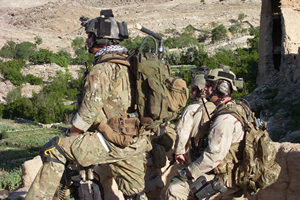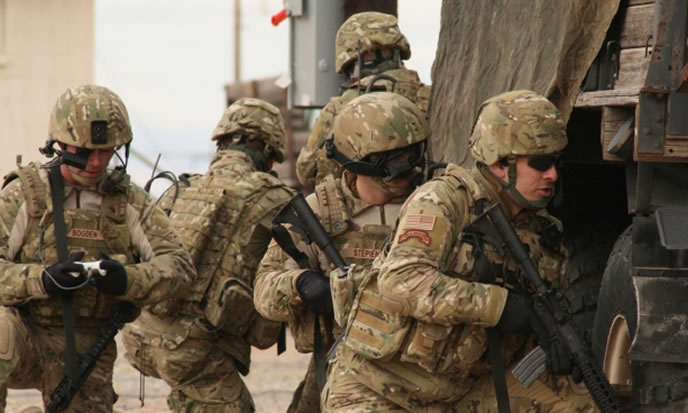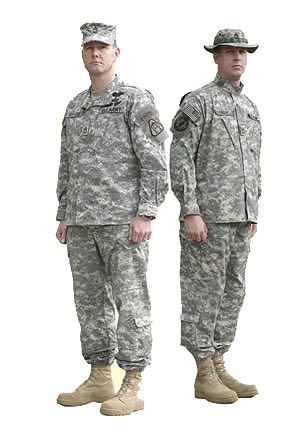Photo above: Soldiers wearing Multicam while demonstrating Future Force Warrior project. Ft. Bliss, Texas. Photo: U.S. Army
Following four months of evaluations of alternative camouflage pattern colors, the U.S. Army selected the MultiCam pattern for the uniforms provided for all soldiers deploying to Afghanistan in support of Operation Enduring Freedom, starting the August of 2010. Multicam Gear will be shipping to units in Afghanistan by October 2010.
Unlike conventional camouflage that blends into the environment by color matching, the MultiCam camouflage pattern patented by Brooklyn NY based Crye Precision is designed to blend and reflect some of the surrounding colors of the environment, thus blending in with the environment. The new pattern is designed to deceive the human eye and brain to accept the concealed object as part of the background. Furthermore, the pattern’s complex, curved elements are shaped to efficiently maintain concealment by effectively managing scale and contrast at long and close range.


The U.S. forces encountered problems with their camouflage patterns soon after the invasion into Afghanistan in 2002, as warfighters deployed to the mountains of Afghanistan and the deserts of Iraq wearing Desert BDUs and Woodland gear. To improve and standardize the uniform the Army introduced the Army Combat Uniform in 2004, applied with the pixelated Universal Camouflage Pattern (UCP). Since then, more than 26 improvements have been implemented with the ACU.
A new initiative to improve the camouflage patterns for Afghanistan was launched by fall 2009, when two battalion-size elements in Afghanistan were equipped with uniforms and associated gear in patterns other than the standard-issue universal camouflage pattern (UCP). One unit received uniforms and gear in MultiCam, and the other in a variant of UCP known as UCP – Delta was used another battalion. The Army deployed a team of experts to Afghanistan in order to gather field data and photos on the diverse environments of Afghanistan, where soldiers often travel through multiple environments in a single mission, from snow to woodland to desert.






















